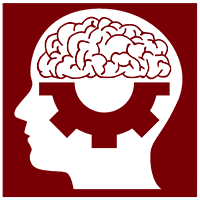
Gabriel Kreiman, Professor in the Departments of Ophthalmology and Neurology at Harvard Medical School and Boston’s Children’s Hospital, talks about how we can build smarter machines by capitalizing on our understanding of the neural mechanisms underlying intelligent behavior in humans and other primates. He shows how behavioral, neural, and computational studies can together provide insight into how humans recognize objects that are partially hidden from view, and how we move our eyes around a complex scene as we engage in visual search. Dr. Kreiman also elucidates some remaining challenges in the study of vision: understanding the role of visual context in scene understanding, recognizing actions, and image captioning.
Video: Deciphering brain codes to build smarter AI (1:14:27)
Additional Resources:
- Kabriel Kreiman’s Lab website
- Kreiman, G. (2021) Biological and Computer Vision, Cambridge, UK: The Cambridge University Press.
- Tang, H., Buia, C., Madhavan, R., Madsen, J., Anderson, W., Crone ,N., & Kreiman, G. (2014) Spatiotemporal dynamics underlying object completion in human ventral visual cortex, Neuron, 83:736-748. Supplementary Material 1 | Supplementary Material 2.
- Zhang, M., Feng, J., Ma, K. T., Lim, J. H., Zhao, Q., Kreiman, G. (2018) Finding any Waldo: zero-shot invariant and efficient visual search, Nature Communications, 9:3730. Supplementary Material | GitHub | Resources.
- Zhang, M., Tseng, C., Kreiman, G. (2020) Putting visual object recognition in context, Proc. 2020 Conference on Computer Vision and Pattern Recognition. Supplementary Material | Resources
- Jacquot, V., Ying, J., Kreiman, G. (2020) Can deep learning recognize subtle human activities? Proc. 2020 Conference on Computer Vision and Pattern Recognition. Resources
- Kreiman, G. and Serre, T. (2020) Beyond the feedforward sweep: feedback computations in the visual cortex. Annals of the New York Academy of Science, 1464:222-241.

